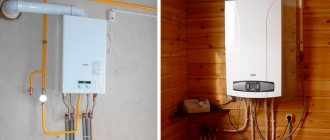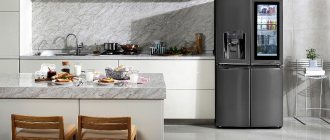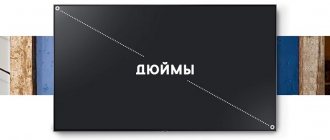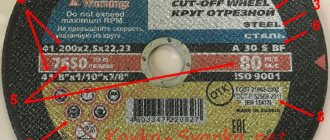An ironing board is an indispensable thing in the house, because you don’t want to walk around in wrinkled clothes, and it’s unsightly, and we’re not used to ironing on tables or sofas. But before purchasing such a useful type of equipment for the home, many people ask the question: “What kind of ironing board is it that is ideal for us? The sizes are so different, how to choose? Let's try to answer. To do this, you need to find out the size of the ironing board when folded and unfolded, and also decide what size board is right for you: small, standard or large. In addition to size, it is important to take into account several more criteria, which we will tell you about at the end of the article.
Kinds
Ironing boards come in different designs: there are stationary ones, which are used in production and do not fold, they are quite large and have many additional technical devices. And among manufacturers for the mass segment and buyers, folding versions of ironing boards are especially popular, which are divided into several more types, such as:
- Folding is a regular ironing board, the support of which is removed by folding it crosswise parallel to the tabletop. It is most often found in Russian apartments, because it folds and unfolds quite quickly, although it is rarely folded, because in addition to its domestic purpose, it is also used as an additional shelf for things. May also have an iron stand.
- The tabletop is the smallest type of technical device in question; it has low legs (up to 50 cm) and small dimensions; it can be easily installed on a regular table, but is not suitable for ironing large items, such as bed linen.
- Folding - such a board has one narrow edge attached to a wall or cabinet using a special fastening that comes with the board upon purchase, and the other can be easily raised or lowered into a vertical position by hooking or fixing. It is often mounted in cabinets, closets or other places where it will not be visible when folded and will not get in the way.
- Retractable - hides under the countertop, in a drawer or other secret place and, if necessary, is taken out in full size. Installation is also quite simple if you have the right size space. It usually pulls out like a box on wheels, but there may be other options.
Design
The important part is the ironing surface; ease of use and durability depend on its size, base material and cover cover:
- The most common option, which is also the cheapest and not the best, is chipboard or plywood. As this material is used, it will delaminate, and a constant squeak will accompany ironing until new furniture is purchased;
- the metal plate with holes greatly weighs down the structure; after a short time, when using an iron with steam, the cover will be severely damaged;
- The metal mesh allows steam to pass through well and does not weigh it down; one of the disadvantages is that the mesh is sealed through the cover. A felt backing can correct the situation;
- a plastic sheet is a good base only for a steam iron;
- a wooden board has practically no disadvantages, especially if the manufacturer has specially impregnated the wood.
The base of the ironing surface is covered with a cover. It comes from cotton fabric - this option is the most common and good for ironing. More modern models are complemented by a non-stick fabric cover. This cover is heat-resistant and waterproof; the disadvantage is the minimal friction created by the surface; things on such a board slide a lot, which makes work somewhat difficult. It is advisable that the removable cover be supplemented with felt, especially if the ironing surface itself is made of metal mesh.
Important! It would be nice if the cover was removable. It is preferably secured with ropes.
One of the important characteristics is sustainability. To do this, it is desirable that the legs protrude beyond its perimeter. The ironing table will be slightly less compact, but more stable. The legs should have rubber tips on them to prevent the table from scratching the floor.
It’s good if the selected board is equipped with a metal stand for the iron. This will allow you to put the iron away without having to turn it over to a vertical position every time.
If you want to bring ironing to perfection, it is useful to purchase a sleeve stand. With its help, ironed sleeves will no longer have pressed folds, each edge of the sleeve will be ironed perfectly.
In some models, there is a shelf for things under the board; ironed items can cool down on it.
Reference! It is not advisable to hide freshly ironed linen while hot in the closet in order to avoid an unpleasant odor later.
A special mesh for ironing will be a nice addition; when using the mesh, there will be no more pressed-in stains from the iron.
Blueprints
The dimensions of products of different versions vary. A drawing will help you understand the dimensions of an ironing board more than a simple description. Let's consider three types (folding, retractable and regular), because... The desktop version differs from the usual one only in size.
Thanks to the drawing, it becomes approximately clear how the legs of a regular board are folded, and how it looks from most manufacturers, differing only in size.
The retractable board can also be folding, as shown in the drawing, or it can be completely retracted into the drawer, but then it must be large.
A little about sizes in words and numbers
The standard dimensions of an ironing board are: length 110-150 cm (including iron stand) and width 30-45 cm. The ratio of length to width varies depending on the model and manufacturer. Most often, ironing boards with dimensions of 120 * 35 cm are found. The height can also be different due to the fact that most models have height adjustment (usually from 10 cm to 1.20 m).
In the store you may come across an option whose dimensions are 150-160 cm in length and 50 cm in width when unfolded. Such large ironing boards are more often used on an industrial scale or in studios. For an ordinary apartment, they are not very convenient due to their size, although they are undoubtedly more comfortable to look at.
Small boards do not exceed 1 m in length and 30 cm in width, they can be tabletop or retractable and, when folded, can easily fit into a small closet. Their main disadvantage has already been mentioned in the article - it is inconvenient to iron large things like bed linen on them.
Classic and modern models
Ironing boards, which are now sold in stores, are divided into classic and modern. Both types fit standard sizes: classic versions have dimensions of 110x30 cm and 120x38 cm, and modern ones - 140x40 cm and 148x45 cm. More often than others, a classic ironing board is purchased, the folded dimensions of which are about 155 * 40 * 12 cm. Using this model is very comfortable.
If you plan to assemble it every time, then you need to find a place where it will fit well and where the ironing board will not interfere. The folded dimensions of all options are almost the same: 140-160 cm in length and 40-50 in width. The thickness is small: about 10-20 cm. Retractable, folding and tabletop ironing boards when folded have approximately the same dimensions as when unfolded.
Leg type
The legs of the ironing board, depending on the shape, ensure the stability of the product, as well as its compactness when folded:
- A-shaped - straight legs diverging towards the bottom. A common option found in many models. The stability indicator is lower than that of other options, but boards of this type are compact when folded.
- U-shaped - straight legs with a wide setting. Better adjustable and quite stable.
- T-shaped - legs crossed among themselves and diverging at the very bottom. They are considered one of the most stable if the lower part is equal to the width of the board.
- L-shaped - not the most common type. Saves space when folded, but some users complain of low stability if
Stability is also affected by the quality of fasteners, as well as special pads on the legs. Rubberized tips allow the product to stand still even on the most slippery floors.
Criterias of choice
Other important characteristics besides size when purchasing should be taken into account:
- Weight - an ironing board, the dimensions of which are standard or close to them, weighs about 5-10 kg. Desktop boards weigh less (about 3 kg).
- Mobility means ease of moving the board, folding and unfolding it, and adjusting it in height.
- Convenience - the width should be large enough to comfortably iron things of any size, and the presence of a stand for the iron and fastening for an outlet or cord will also be a positive thing. Nowadays, rubberized stands are often found, as well as sockets with an extension cord on the bottom side for easy connection to the iron.
- Quality of materials and durability - you need to carefully study what the ironing board is made of. The most short-lived material is chipboard, but its opposite and most reliable is thermoplastic. But the latter is very expensive, and only innovatively equipped companies produce thermoplastic ironing boards.
Ironing board as a piece of furniture
A folding and regular folding ironing board, the folded length of which is about 1.5 m, can serve as an excellent piece of furniture. An ordinary board can be used as an analogue of a painting if it has a beautiful cover and legs. A folding model can have a mirror on the back side and when unfolded can be an ironing board, and when folded it can be a mirror. Thus, 2 problems of small apartments are solved at once: there is no need to look for additional space for a mirror, and there is no need to hide the board when you have finished ironing. Just remember that the mirror must be carefully attached so that it does not fall off or break.
Types of ironing boards
The most common and popular ironing board, which is found in almost every home, is the floor ironing board. This design consists of a plastic or wood tabletop on high legs made of durable metal. Most floor-standing models are foldable; after use, they can be put away in a closet or behind the door, thereby saving useful space in the room.
Unlike folding boards, stationary boards require a special workplace. It is best to choose such models for owners of spacious houses with a separate dressing room or pantry for storing and ironing clothes.
In addition to floor-mounted ones, there are other types of ironing boards:
- Tabletop - they are light, compact, and cheaper in price compared to other models. The size of the tabletops of such boards is usually 70:30 cm, and the height of the legs does not exceed 20 cm. Their surface can be equipped with rubberized pads that prevent the board from sliding on the table during ironing. Tabletop structures are suitable for ironing small items - children's clothes, T-shirts. It is not very convenient to iron bulky items, such as tablecloths or duvet covers, on a tabletop board.
- Built-in - the advantage of built-in structures is the ability to save useful space in the room, while maintaining the attractiveness of the interior. Such boards can be hidden inside a wall mirror, which is attached to the main structure using awnings and opens like a regular door. Upon completion of work, the wall folding board is folded and installed back under the mirror. Another option for built-in models is retractable ones, which, as a rule, are hidden in drawers. This tabletop is attached to a roller retractable mechanism, thanks to which the board can be laid out along its entire length, and then folded and put away in place.
- Transformers are very convenient designs for a house that does not have a large area. They can combine an ironing board with a chest of drawers or a nightstand. If necessary, the structure is unfolded, and at the end of the work, the ironing board is removed again, and it becomes invisible to strangers. Some models are made in the form of a stepladder; they are characterized by good stability and have a respectable size. However, ironing ladders are heavy, which can cause some inconvenience.
- Professional ironing boards are ultra-modern designs that include an active ironing surface, a steam iron and a steam generator. The work surface has heating and ventilation functions; the ironer is also equipped with a descaling system, steam control, and other useful options. These ironing boards can be an excellent choice for women who sew clothes at home.











